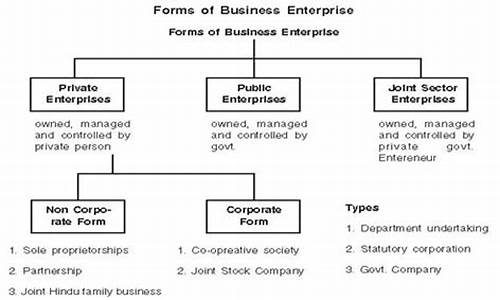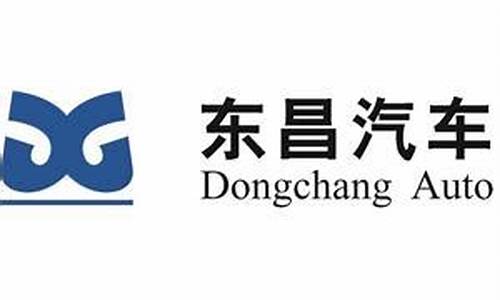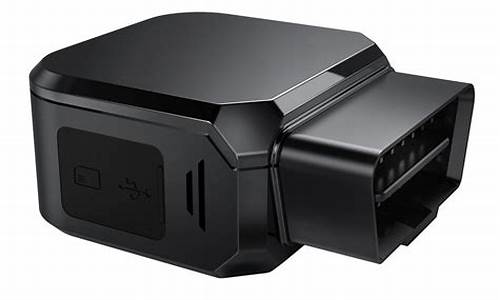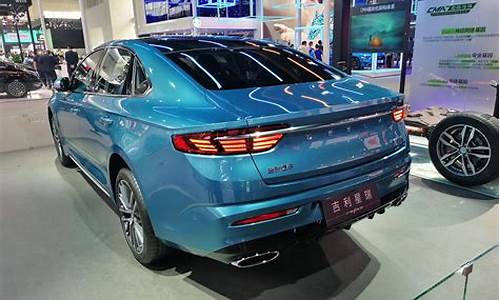business card case_business card case翻译
接下来,我将通过一些实际案例和个人观点来回答大家对于business card case的问题。现在,让我们开始探讨一下business card case的话题。
1.数据库中显示表的各个字段属性,它所用的命令是什么?书上说实用describe,但是我用的时候说错误
2.高分聘外语牛人翻译一些词汇(非文章)
3.Business etiquette in China

数据库中显示表的各个字段属性,它所用的命令是什么?书上说实用describe,但是我用的时候说错误
SELECT
TableName=CASE WHEN C.column_id=1 THEN O.name ELSE N'' END,
TableDesc=ISNULL(CASE WHEN C.column_id=1 THEN PTB.[value] END,N''),
Column_id=C.column_id,
ColumnName=C.name,
PrimaryKey=ISNULL(IDX.PrimaryKey,N''),
[IDENTITY]=CASE WHEN C.is_identity=1 THEN N'√'ELSE N'' END,
Computed=CASE WHEN C.is_computed=1 THEN N'√'ELSE N'' END,
Type=T.name,
Length=C.max_length,
Precision=C.precision,
Scale=C.scale,
NullAble=CASE WHEN C.is_nullable=1 THEN N'√'ELSE N'' END,
[Default]=ISNULL(D.definition,N''),
ColumnDesc=ISNULL(PFD.[value],N''),
IndexName=ISNULL(IDX.IndexName,N''),
IndexSort=ISNULL(IDX.Sort,N''),
Create_Date=O.Create_Date,
Modify_Date=O.Modify_date
FROM sys.columns C
INNER JOIN sys.objects O
ON C.[object_id]=O.[object_id]
AND O.type='U'
AND O.is_ms_shipped=0
INNER JOIN sys.types T
ON C.user_type_id=T.user_type_id
LEFT JOIN sys.default_constraints D
ON C.[object_id]=D.parent_object_id
AND C.column_id=D.parent_column_id
AND C.default_object_id=D.[object_id]
LEFT JOIN sys.extended_properties PFD
ON PFD.class=1
AND C.[object_id]=PFD.major_id
AND C.column_id=PFD.minor_id
-- AND PFD.name='Caption' -- 字段说明对应的描述名称(一个字段可以添加多个不同name的描述)
LEFT JOIN sys.extended_properties PTB
ON PTB.class=1
AND PTB.minor_id=0
AND C.[object_id]=PTB.major_id
-- AND PFD.name='Caption' -- 表说明对应的描述名称(一个表可以添加多个不同name的描述)
LEFT JOIN -- 索引及主键信息
(
SELECT
IDXC.[object_id],
IDXC.column_id,
Sort=CASE INDEXKEY_PROPERTY(IDXC.[object_id],IDXC.index_id,IDXC.index_column_id,'IsDescending')
WHEN 1 THEN 'DESC' WHEN 0 THEN 'ASC' ELSE '' END,
PrimaryKey=CASE WHEN IDX.is_primary_key=1 THEN N'√'ELSE N'' END,
IndexName=IDX.Name
FROM sys.indexes IDX
INNER JOIN sys.index_columns IDXC
ON IDX.[object_id]=IDXC.[object_id]
AND IDX.index_id=IDXC.index_id
LEFT JOIN sys.key_constraints KC
ON IDX.[object_id]=KC.[parent_object_id]
AND IDX.index_id=KC.unique_index_id
INNER JOIN -- 对于一个列包含多个索引的情况,只显示第1个索引信息
(
SELECT [object_id], Column_id, index_id=MIN(index_id)
FROM sys.index_columns
GROUP BY [object_id], Column_id
) IDXCUQ
ON IDXC.[object_id]=IDXCUQ.[object_id]
AND IDXC.Column_id=IDXCUQ.Column_id
AND IDXC.index_id=IDXCUQ.index_id
) IDX
ON C.[object_id]=IDX.[object_id]
AND C.column_id=IDX.column_id
-- WHERE O.name=N'要查询的表' -- 如果只查询指定表,加上此条件 没有写的话,就是查询---该数据库的所有表
WHERE O.name='BusinessCardInfo' --这里是查询表BusinessCardInfo的所有字段属性。
ORDER BY O.name,C.column_id
---------------------------------------------------------------------------------------------------
上面的也测试过了。没问题的。只显示指定表的个字段属性
上面这个方法是以前刚好要用网上一个叫“邹建”的写的,这里就借花献佛下。
其实这个写蛮麻烦的。想好记点就直接用 SP_HELP 表名
不过里面信息比较多,自己得去小找下。
高分聘外语牛人翻译一些词汇(非文章)
名片夹
name card holder
business card holder
cardcase
名片夹:namecard holder | business card holder
Business etiquette in China
储物筐 Storage Basket
杯垫 Coaster
抽纸盒 Paper box
储物框 Storage
大靠椅 Couch
方凳 Stool
擀面杖 Rolling Pin
工艺鞋架 Shoe Shelf
花园桌 Outdoor Table
垃圾桶 Trash Can
毛巾架 Towel Shelf
米桶 Rice Buchet
名片盒 Business card case
切菜板 Cutting Board
三角酒架 Wine Rack (Liquor Cabinet)
文件柜 File Cabinet
文件架 File Shelf
小靠椅 Arm Chair
小圆凳 Small Stool
烟灰缸 Ashtray
浴足凳 Stool
杂物桶 Sundries Pale
纸巾盒 Tissue Box
纸巾座 Tissue Set
组合毛巾 Towel Set
Business Etiquette and Protocol in China
Relationships & Communication
. The Chinese don't like doing business with companies they don't know, so working through an intermediary is crucial. This could be an individual or an organization who can make a formal introduction and vouch for the reliability of your company.
. Before arriving in China send materials (written in Chinese) that describe your company, its history, and literature about your products and services. The Chinese often use intermediaries to ask questions that they would prefer not to make directly.
. Business relationships are built formally after the Chinese get to know you.
. Be very patient. It takes a considerable amount of time and is bound up with enormous bureaucracy.
. The Chinese see foreigners as representatives of their company rather than as individuals.
. Rank is extremely important in business relationships and you must keep rank differences in mind when communicating.
. Gender bias is nonexistent in business.
. Never lose sight of the fact that communication is official, especially in dealing with someone of higher rank. Treating them too informally, especially in front of their peers, may well ruin a potential deal.
. The Chinese prefer face-to-face meetings rather than written or telephonic communication.
. Meals and social events are not the place for business discussions. There is a demarcation between business and socializing in China, so try to be careful not to intertwine the two.
Business Meeting Etiquette
. Appointments are necessary and, if possible, should be made between one-to-two months in advance, preferably in writing.
. If you do not have a contact within the company, use an intermediary to arrange a formal introduction. Once the introduction has been made, you should provide the company with information about your company and what you want to accomplish at the meeting.
. You should arrive at meetings on time or slightly early. The Chinese view punctuality as a virtue. Arriving late is an insult and could negatively affect your relationship
. Pay great attention to the agenda as each Chinese participant has his or her own agenda that they will attempt to introduce.
. Send an agenda before the meeting so your Chinese colleagues have the chance to meet with any technical experts prior to the meeting. Discuss the agenda with your translator/intermediary prior to submission.
. Each participant will take an opportunity to dominate the floor for lengthy periods without appearing to say very much of anything that actually contributes to the meeting. Be patient and listen. There could be subtle messages being transmitted that would assist you in allaying fears of on-going association.
. Meetings require patience. Mobile phones ring frequently and conversations tend to be boisterous. Never ask the Chinese to turn off their mobile phones as this causes you both to lose face.
. Guests are generally escorted to their seats, which are in descending order of rank. Senior people generally sit opposite senior people from the other side.
. It is imperative that you bring your own interpreter, especially if you plan to discuss legal or extremely technical concepts as you can brief the interpreter prior to the meeting.
. Written material should be available in both English and Chinese, using simplified characters. Be very careful about what is written. Make absolutely certain that written translations are accurate and cannot be misinterpreted.
. Visual aids are useful in large meetings and should only be done with black type on white background. Colours have special meanings and if you are not careful, your colour choice could work against you.
. Presentations should be detailed and factual and focus on long-term benefits. Be prepared for the presentation to be a challenge.
Business Negotiation
. Only senior members of the negotiating team will speak. Designate the most senior person in your group as your spokesman for the introductory functions.
. Business negotiations occur at a slow pace.
. Be prepared for the agenda to become a jumping off point for other discussions.
. Chinese are non-confrontational. They will not overtly say 'no', they will say 'they will think about it' or 'they will see'.
. Chinese negotiations are process oriented. They want to determine if relationships can develop to a stage where both parties are comfortable doing business with the other.
. Decisions may take a long time, as they require careful review and consideration.
. Under no circumstances should you lose your temper or you will lose face and irrevocably damage your relationship.
. Do not use high-pressure tactics. You might find yourself outmanoeuvred.
. Business is hierarchical. Decisions are unlikely to be made during the meetings you attend.
. The Chinese are shrewd negotiators.
. Your starting price should leave room for negotiation.
What to Wear?
. Business attire is conservative and unpretentious.
. Men should wear dark coloured, conservative business suits.
. Women should wear conservative business suits or dresses with a high neckline.
. Women should wear flat shoes or shoes with very low heels.
. Bright colours should be avoided.
Business Cards
. Business cards are exchanged after the initial introduction.
. Have one side of your business card translated into Chinese using simplified Chinese characters that are printed in gold ink since gold is an auspicious colour.
. Your business card should include your title. If your company is the oldest or largest in your country, that fact should be on your card as well.
. Hold the card in both hands when offering it, Chinese side facing the recipient.
. Examine a business card before putting it on the table next to you or in a business card case.
. Never write on someone's card unless so directed.
今天关于“business card case”的讲解就到这里了。希望大家能够更深入地了解这个主题,并从我的回答中找到需要的信息。如果您有任何问题或需要进一步的信息,请随时告诉我。
声明:本站所有文章资源内容,如无特殊说明或标注,均为采集网络资源。如若本站内容侵犯了原著者的合法权益,可联系本站删除。












